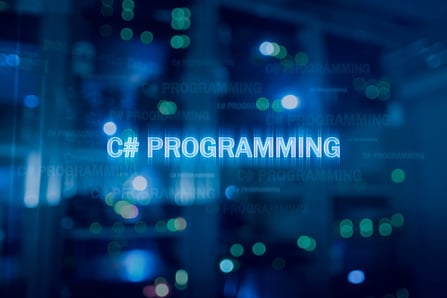
Learn all you need to know about mainframe to cloud migration: why you need it, the challenges you might face, and options for mainframe modernization.

Automate the creation and delivery of C# APIs from legacy assets
Over the past four years, I have worked as a Senior Solutions Architect at OpenLegacy. I dealt with simple and complex business cases in a wide range of industries, especially banking and insurance. I've worked on a variety of scenarios, and contributed at different stages of the sales cycle, including technical demos, proofs of concept, and small pilots, and, fortunately, also wore my technical hat in dealing with large-scale projects.

In most of the opportunities, people said the OpenLegacy solution would bring value to the organization and meet their needs. The main reason for this “yes, it can make it” statement is the capacity of the OpenLegacy solution to generate APIs very easily and quickly from most kinds of legacy or backend platform (Mainframes, IBM i, SAP, Temenos, Oracle DB, MS SQL Server, etc).
The classic OpenLegacy IDE, developed on top of Eclipse enables developers to generate standard Java Spring Boot APIs and Microservices connected to the underlying backends and legacies.
However, there were a bunch of cases where we confronted the following reality: not every company (or team inside the company) likes the fact that the OpenLegacy IDE produces Java code. Sometimes, they need C# or even node.JS for their APIs and Microservices. They also may want a completely automated way to parse assets and generate services that fits CI/CD scripting processes.
Recently I ran into just such a case. I was asked to give a demo to a development team at an Australian Bank. The use case they picked was:
- Generating C# APIs.
- Automatic generation of the APIs (no human interaction in the process and no GUI).
If this happened only just a few months ago, we would have decided against meeting with the lead. However, this time not only did we meet with them but also gave a great demo that dealt with all the requirements and positioned us in the right direction to make them a future client.
The preparation of the demo also took almost no effort or time. Why is this? Because of our new platform: the OpenLegacy HUB.
What functionalities does the OpenLegacy Hub provide?
- The OpenLegacy Hub has its own command line interface. From any terminal you can parse legacy assets, turn them into modules (simple JSON representations of the legacy assets), test the execution of modules, generate services and even create projects. You also can upload any of these elements into the Hub Repository.
You can combine all these possibilities with any command of your preferred CI/CD tools in a smarter script, meaning you can automate the whole process of API generation, testing and deployment.
Development teams no longer depend on forms and wizards to generate your API fast. The process is completely automatable and enrichable.
- The Hub also is completely development language agnostic.
Does your development team know Java or C#, or maybe Node.js? Actually, it doesn’t matter. You decide the language needed for your APIs when generating them.
Instead of creating Java code up front, the Hub (or the CLI) generates a contract containing methods. The contract is exported as a service (microservice, serverless function…), in a specific software development language and a framework. It also supports the use of templates for customizing what is being built.
For C# code, select a specific built-in solution and generate code. The C# code uses the ASP.NET Core Framework. And voila ! You will see the Controllers, View, Model, NUnit tests and configuration files and C# code. Then, of course, use your own IDE to add business logic easily.
So far, we explained why this lead might become a happy client soon. However, this is not enough. The Hub brings many more features as well, like the formidable API Designer, which enables an API developer to enrich the method logic with flow management, orchestration, conditions, mappings, field renaming, expressions and so on.
- And finally, the API can be easily deployed to any platform.
Overall the OpenLegacy Hub is a complete API design platform that supports legacy systems in a language agnostic way. This gives users complete flexibility to design their services whatever way they want too.
We’d love to give you a demo.
Please leave us your details and we'll be in touch shortly
